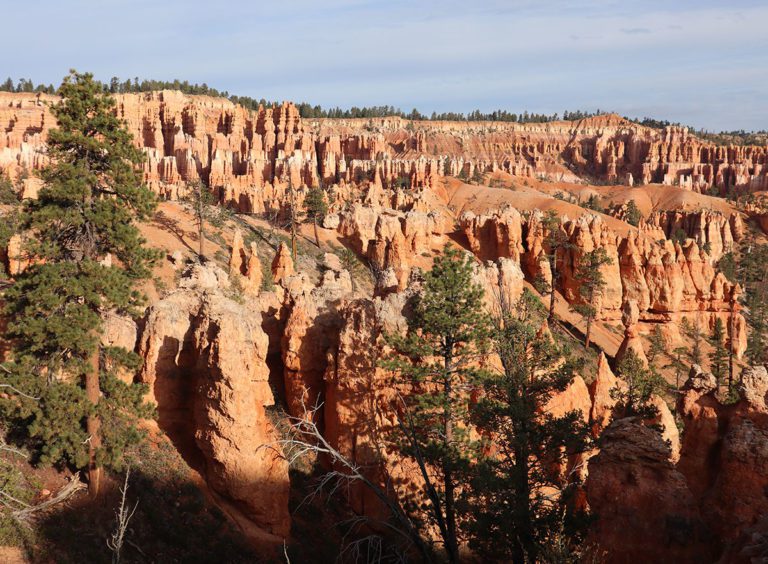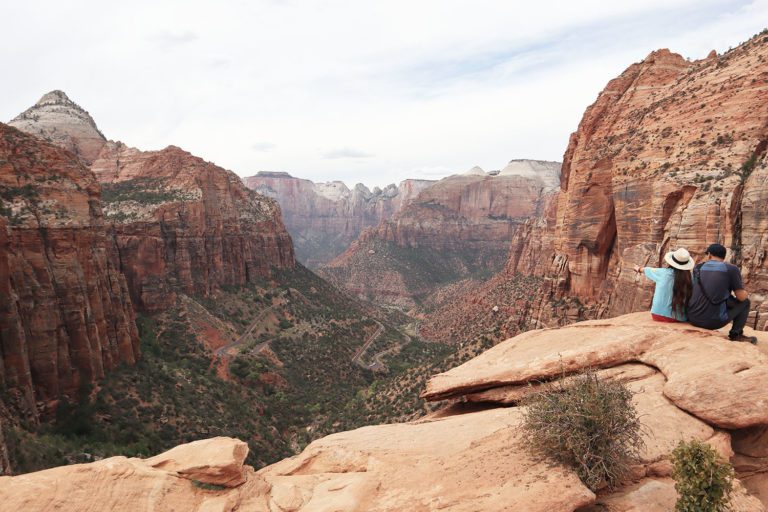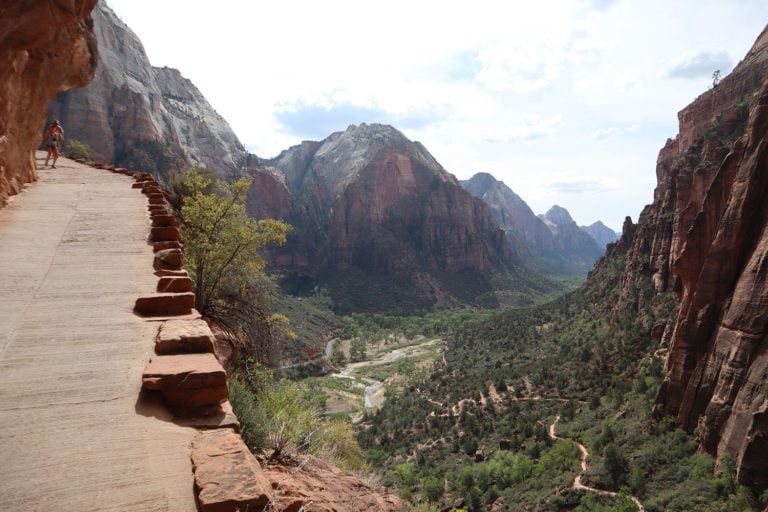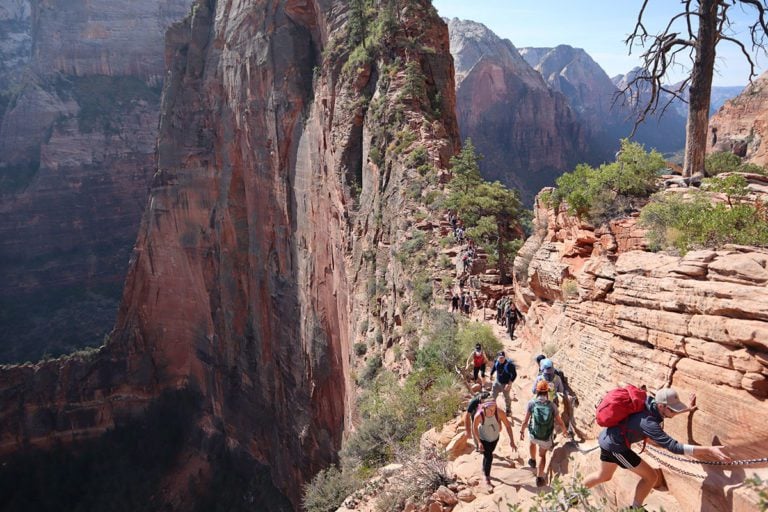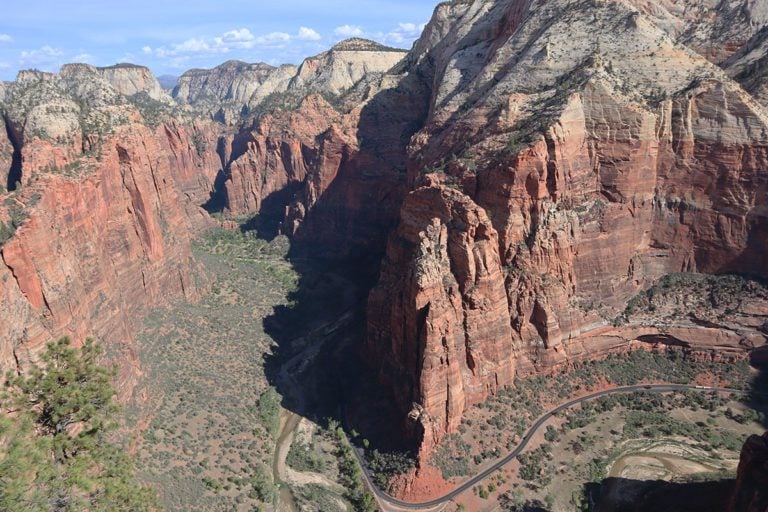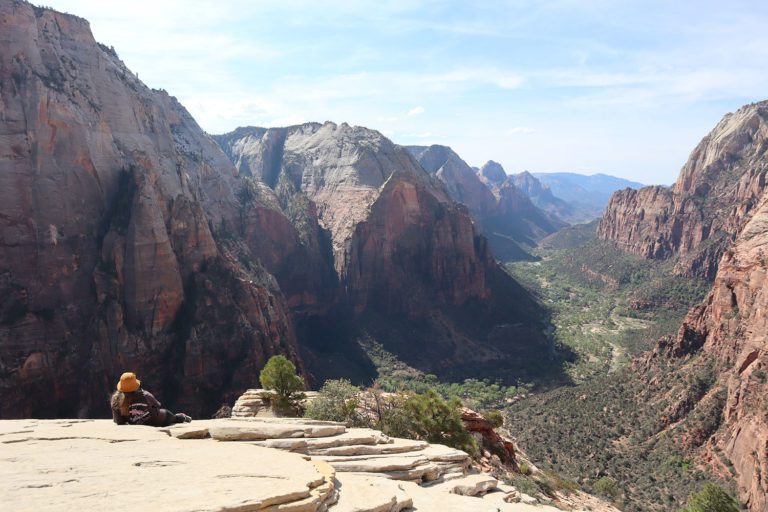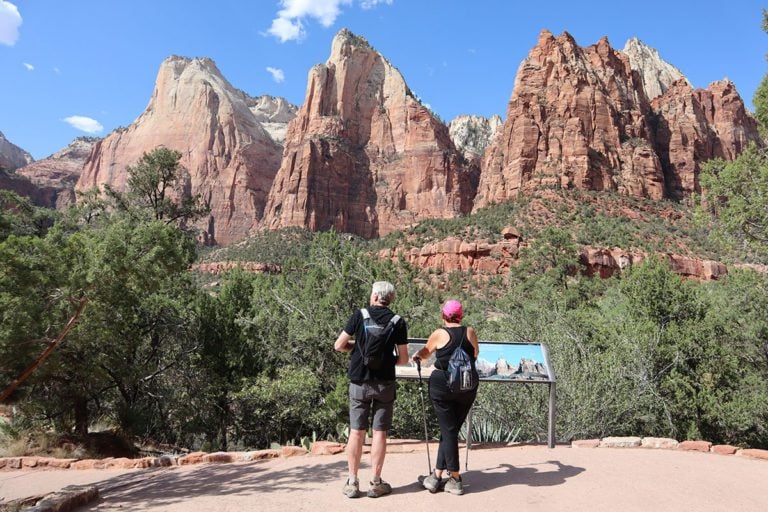The best time to visit Zion National Park is during spring and fall.
Winter: cold weather, snow, and rain keep the crowds away. Access to the park’s higher elevation and some trails might be restricted. This is a unique time to visit Zion if you enjoy winter desert scenery, detest crowds, and aren’t planning action-packed days.
Spring: wildflowers are blooming, especially during May, but the melting snow could put a damper on plans to hike the Narrows. Park shuttles are back in operation and starting in March, visitor numbers begin to spike.
Summer: it’s hot but the days are long, so a lot can be covered, though frequent late-afternoon thunderstorms could shorten the day. Be prepared to share the space with hoards of other visitors.
Fall: the days are still long and the temperature is pleasant, though with varying degrees between elevations. Fall colors can be seen along Kolob Terrace Road and by late fall inside the canyon. Though it’s still busy inside the park in early fall, you’ll have more space to yourself as winter approaches.
